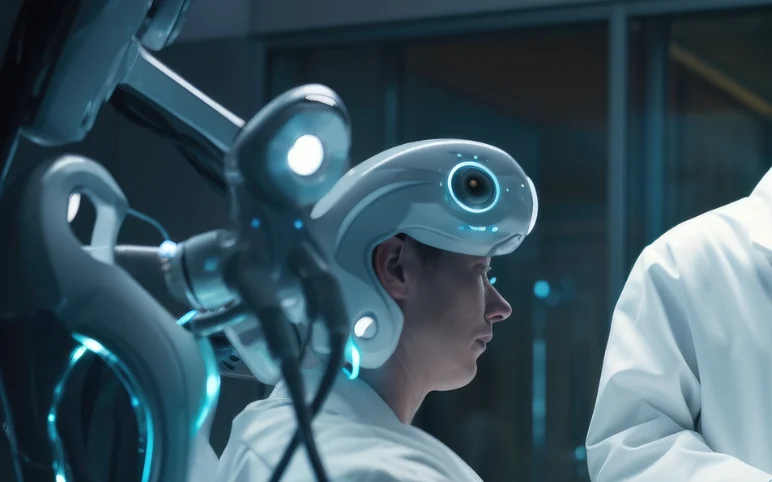A prosthetic device or prosthesis is a great tool and plays a crucial role in the life of disabled people. Prosthetics help to perform nearly all their daily activities, such as walking, eating, dressing, and many more. These artificial limbs replace missing body parts and help function in nearly all the activities a normal person can do. In recent years, technical innovations have led to significant advancements in artificial limb developments. With innovation, prosthetics are getting much more comfortable and efficient. Some prosthetics can even mimic and perform movements like a body part.
What is Leading to the Rising Demand for Prosthetics?
Traumatic injuries, including traffic accidents and military combat, are the major reasons people lose their body parts. Circulation problems arising due to atherosclerosis or diabetes, arthritis, limb infection, and cancer are also among the major contributors to the yearly increase in amputation cases worldwide. In some cases, the amputation may be due to some birth defects. To make life simpler for people who have lost their essential body parts, several types of prosthetics, such as prosthetic arms, prosthetic legs/knees, prosthetic feet/ankles, and prosthetic hands, are available in the market in different shapes and forms.
Several companies are working on developing mind-controlled and AI-equipped 3D-printed prosthetics, which are often termed robotic prosthetics. These prostheses enable people with physical impairments or functional limitations to live healthy, productive, and independent lives. The Prosthetic is a great tool for children to continue their educational activities and normal life. In their later years, they can create equal opportunities in the labor market. Most importantly, prosthetics help to live a normal social life and reduce the support services required from the caregiver. Overall, it helps them to reduce the burden of morbidity and disability
What are the Key Challenges in the Prosthetics Market?
The availability of prosthetics is one of the key challenges in the market. Nearly 30 million people are in need of prosthetic and orthotic devices worldwide. As per the report published by WHO (2017), only 1 in 10 people in need has access to assistive products, including prostheses and orthoses. As per the Amputee Coalition, in the United States, 2.1 million people are living with limb loss, and about 185,000 amputations occur each year. By 2050, nearly 3.6 million people will be living with limb loss in the US. More than 75 percent of developing countries do not have a prosthetics and orthotics training program in place, which create significant challenge and poorer clinical coverage of patients. Moreover, it is observed that lack of awareness, availability, stringent government policy and financing are the major challenges in the Prosthetics Market.
Evolving Market Landscape of Robotic Prosthetics
Robotic Prosthetics is an advanced and upgraded form of Prosthetics that provides greater control to an individual’s capacity and makes life much easier for people with missing limbs. Robotic Prosthetics are getting significant attention due to their wide range of applications. Many types of robotic prosthetics are available in the market that can perform various complex functions and can cater to the different needs of the patient. These highly sophisticated and advanced Prosthetics come with biosensor technology and use artificial intelligence. Prosthetics can be controlled by neuromuscular implants that ensure greater mobility and provide amputees with new prospects in their personal and professional lives. As innovations are going on in the coming year, robotic prosthetics are expected to provide immense strength enhancement and medical rehabilitation to users. Many advanced Prosthetics are made from carbon fiber or fiberglass, which can easily accommodate the high weight and provides higher flexibility.
The Prosthetic is segmented based on several types as product type (prosthetic arm, prosthetic knee, prosthetic feet/ankle, prosthetic hand, and others), technology (MPC Prosthetics, Myoelectric Prosthetics), and extremity (lower body prosthetics, upper body prosthetics). Robotic Prosthetics can be attached to the skeleton to provide mechanical stability and a better biological control system; that is, nerves and muscles are also interfaced with the machine’s control system via neuromuscular electrodes. This creates an intimate union between the body and the machine, between biology and mechatronics.
Cyberdyne, a Japan-based robotics company that had developed a HAL (Hybrid Assistive Limb) robotic exoskeleton suit, which increases body movement and strength by up to ten times. The robotic suit will use the patient’s intention to move the legs. It is also the world‘s first cyborg-type robot that aids a physically challenged person to move and exert bigger motor energy. DEKA Research & Development Corporation, a technology company based in the US, is working on transforming upper-limb prosthetics and helping to improve the quality of life for amputees. The company has designed “Luke,” a robotic arm prosthesis that can restore body functionality for individuals with upper extremity amputations. With Luke, the person can contract muscles and will demonstrate movement according to what the individual is thinking. To gain the major market share and grab the untapped market, several startups have emerged in the robotic prosthetics market. Similarly, Exii is a Japan-based startup that has developed a high-quality bionic prosthetic arm that is affordable, stylish, and can perform several functions. Exii’s Prosthetics can perform a high degree of muscle expansion and contraction.
Major Developments in the Robotic Prosthetics Market
Robotic prosthetics development has got immense attention in recent times from major tech giants and startups. Several clinical and commercial activities are going on in the Robotic exoskeletons’ system market, funded by private and government entities globally. Similarly, several highly innovative robotic prosthetics products have recently been approved and commercialized.
In January 2013, a Swedish arm amputee became the first person in the world to receive a mind-controlled prosthetic arm that is surgically connected and directly interfaced with his bone, nerves, and muscles. With the integrated interfaces, he can control the robotic prosthetic with his brain. In 2014, the FDA approved a new type of highly advanced bionic arm, DEKA Arm, for amputees with an unprecedented level of control and can perform multiple simultaneous powered movements. The DEKA Arm is operated by electrical signals prompted by the contraction of muscles close to where the prosthesis is attached. Electrodes then send the signals to a computer processor that translates them into specific movement or movements.
On December 18, 2020, US FDA approved the Osseoanchored Prostheses for the Rehabilitation of Amputees (OPRA) Implant System manufactured by Integrum AB (Mölndal, Sweden). It is the first implant system marketed in the country for adults who have transfemoral – or above-the-knee – amputations and who have or are anticipated to have rehabilitation problems with, or cannot use, a conventional socket prosthesis. On October 11th, 2022, Integrum announced that it had received patent approval in the US describing components and design features of the OPRATM Implant System, including elements that were implemented in 2017 and later were granted PMA approval in late 2020. The patent period extends until 2044.
Recently, on October 5, 2022, The University Of Utah claimed that it had developed the most advanced bionic leg ever created. The university has named it “Utah Bionic Leg,”. The Bionic Leg uses motors, processors, and advanced artificial intelligence that all work together to give amputees more power to perform various functions. The Utah Bionic Leg is highly beneficial for people with amputations, particularly elderly individuals. Now, the university is looking forward to establishing a new partnership with the worldwide leader in the prosthetics industry, Ottobock, to license the technology behind the Utah Bionic Leg and bring it to individuals with lower-limb amputations.
Robotic Prosthetics Market Dynamics
As per DelveInsight, the global robotic prosthetics market to exhibit a high growth rate in the coming years owing to the ongoing innovation in the field of robotics and the high rate of adoption of new technologies in the healthcare market, such as artificial intelligence, 3D printing, and others. Additionally, technological innovation in microprocessors, connectivity (such as microprocessor controllers, BlueTooth technology), myoelectric technology, and targeted muscle reinnervation will also immensely influence the market growth.
The rise in limb loss cases due to accidents, chronic diseases (like diabetes, obesity, osteoarthritis, peripheral arterial disease, and vascular disease), and cancer, which lead to amputation, are expected to drive the demand for robotic prosthetics. The rising spending power, growing demand for better technologies, and custom-made bionic prostheses will significantly propel the market forward. Moreover, in recent years, governments, non-profit organizations and other healthcare organizations, and several major MedTech giants have taken a keen interest in the Prosthetics segment, which is expecte to play an instrumental role in fulfilling the robotic prosthetics demand.
Despite several favorable initiatives, the high cost associated with the implantation and maintenance of robotic prosthetic devices and the lack of awareness among the general public are the key challenges that can hamper the robotic prosthetics market growth in the coming years.
Key Companies in the Robotic Prosthetics Market
The robotic Prosthetics Market is one of the most competitive segments in the healthcare industry, with several key players active in the development and commercialization of new products. In recent years, many investments in research and development activities and collaboration between MedTech giants have been registered in the segment.
Currently, some of the key companies making an impact with the technological and product development activities in the robotic prosthetics Market include Synchron, Xilloc Medical, Mobius Bionics, Marsi Bionics, Cyberdyne, SuitX, Open Bionics, Human Technology Inc, HDT Global, Shadow Robot Company, SynTouch, Inc., Sarcos Robotics, Ekso Bionics, ReWalk Robotics, Endolite, Össur, Artificial Limbs & Appliances Pty Ltd., Touch Bionics, Blatchford Group, and several others. Similarly, several new startups are also trying their hand at robotic prosthetics.
The rising number of amputations around the globe due to increasing traumatic and non-traumatic injuries, vascular disease, diabetes, limb infection, and accidents is expected to drive the demand for prosthetics in the coming years, thereby providing opportunities for the MedTech giants to enter the segment with catering the need with innovative solutions.
Robotic Prosthetics: Future Perspectives
The robotic prosthetic market is a highly dynamic and evolving industry. The market is growing rapidly with the ongoing clinic and commercial activities in the product development segment. MedTech and several new startups are developing innovative robotic prosthetics with wide-ranging applications to grab the market share and remain competitive in the segment. Similarly, new technological advancements, such as brain-computer interface (BCI), robotics, and artificial intelligence, are also significantly contributing to the robotic prosthetics market and hold the massive potential to transform people’s lives.



